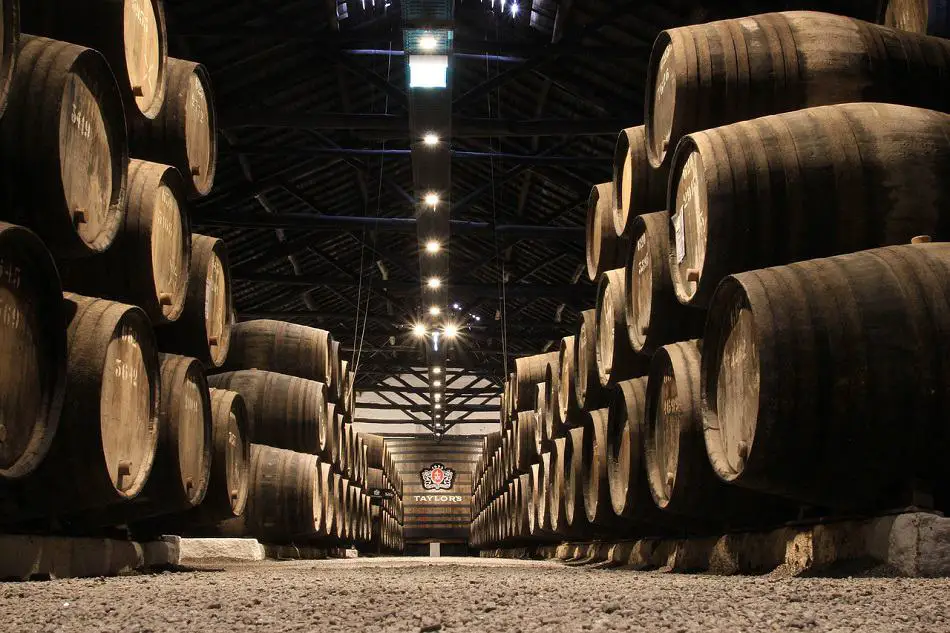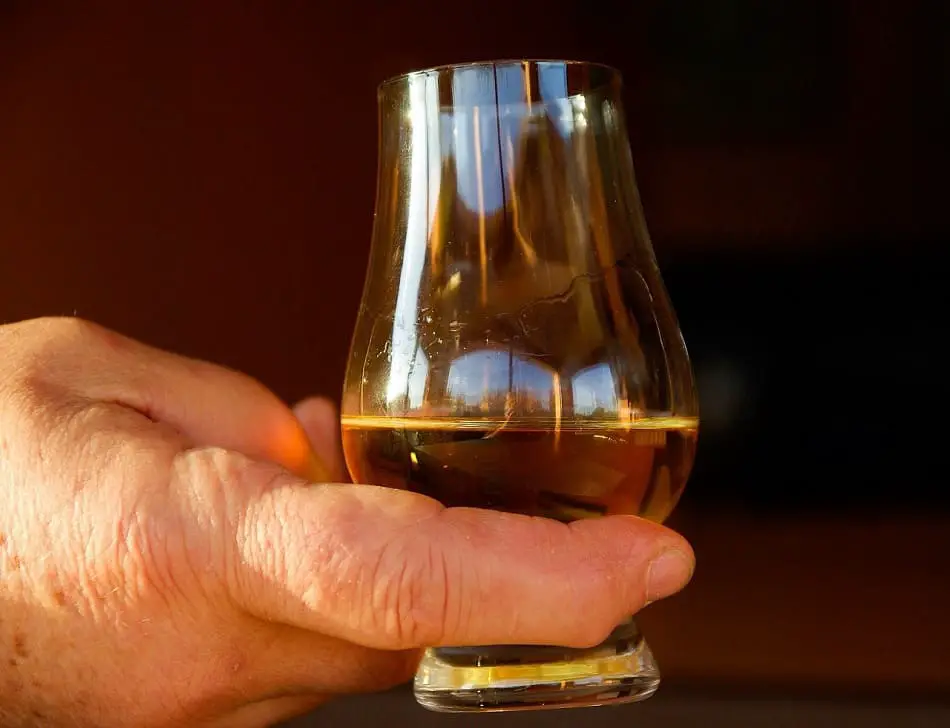If you enjoy a glass of whiskey and are wondering why it tastes so good, then you’ve come to the right place. I shall endeavor to explain this awesome deliciousness – between sips.
Whiskey tastes good because it contains a lot of flavors. These mostly come from the wood of the barrel the whiskey is matured in but also from the grain it’s made from. Other aspects of the whiskey making process can also contribute to the flavor such as the yeast and water used, how whiskey is distilled and whether peat was used in the malting process.
Let’s take a closer look at where the flavors come from, the types of flavors you can expect to taste and how to make sure you’re bringing them out every time you drink a glass of whiskey.

Where the Deliciousness of Whiskey Comes From
The reason why whiskey tastes so good is because it contains a lot of flavors. Even light-bodied whiskeys with only one or two dominant flavors will have a lot more subtle flavors. Full-bodied whiskey can have dozens of dominant flavors!
The flavors are imparted to the whiskey during the whiskey making process and although the overall process is the same the world over, slight differences between distilleries will affect the final taste of the product. Which explains why we have so many whiskeys with so many different flavors.
A whiskey receives 80% of its flavor during the ageing / maturation process. This is when the distilled alcohol is placed into barrels and stored, and changes in temperature and humidity cause it to seep into the wood and back out again, picking up lots of flavors in the process.
All sorts of factors affect what these flavors will be. The wood obviously, because different woods contain different flavors, whether the wood is toasted or charred which determines how well the wood sugars are converted into flavors that will be transmitted to the whiskey and whether the barrel is brand new or has already been used to store another spirit and so will have absorbed some of that in its wood for later retransmission to the whiskey.
The size of the barrel is also important. The smaller the barrel is the higher the ratio of whiskey to surface area of flavor-imparting wood and the more flavor is transmitted. The bigger the barrel is … well the opposite.
The environment the barrel is stored in affects the whiskey because wood is porous so the air quality, temperature and humidity can affect the whiskey. It also affects the speed at which the flavor is imparted, allowing for more flavor to be imparted in a short period of time.
Which brings us to the most important flavor-determining factor which is the length of time a whiskey is stored in the barrel.
This is because the longer a whiskey is aged the more it goes into the wood of the barrel and back out again, and the more the wood of the barrel transmits different and intricate flavors to the liquid. This is why whiskey is matured for years, sometimes even decades. Common amounts of time to age whiskey is 12 or 18 years, but it could be in the barrel for as many as 30 years or more!
It’s not surprising that something which takes that long to make is going to end up mouthwateringly delicious.

The other 20% of a whiskey’s flavor comes from the rest of the whiskey making process. A big part of this is the grain or grains used to make the whiskey and their mix. The most common grains used are barley which has a sweet taste, corn with a sweet, syrupy taste, rye which makes a whiskey spicy and wheat that gives a whiskey the taste of bread and honey.
The yeast used in the fermenting process will impart some flavor to the whiskey as will the water which tastes different depending on the location of the distillery. The exact method of distilling (pot versus column), the size of the stills and the number of times a whiskey is distilled will also affect a whiskey’s flavor.
Also, many whiskeys (usually Scotch whiskies) are peated, giving them a smoky flavor. The peaty flavor is imparted at the end of the malting process which is how the starches of barley are accessed so it can be converted into sugar and then alcohol. The barley is soaked in warm water and then spread out on the floor of the malting house and left to partially sprout or germinate for about five days.
It’s then spread on the grids of a kiln to dry with hot air from below. If peat is used to fuel the kiln, it will give the whiskey a smoky, peaty flavor. The type of peat used will determine the precise flavor and the length of time the barley is dried in the peat smoke will affect its strength.
Not everyone likes a peaty whiskey, and in truth not everyone will like every flavor of every whiskey, but that’s not a problem. There are many whiskeys with many flavors, so while it’s likely that you’ll find some with flavors you don’t particularly like, you’re also likely to find dozens of whiskeys with flavors that you’ll love.
What Kind of Flavors Does Whiskey Have?
With a lot of whiskeys out there you’ll find a lot of flavors, but a general way to start looking at whiskey flavors is to see whether they’re sweet, spicy, fruity, floral, briny or smoky (peaty).
More specifically you may detect the following flavors: Honeysuckle, almond, grass, leather, cream, ginger, toffee, toast, cinnamon, heather, dried fruit, apple, honey, nutmeg, vanilla, nuts, oil, seaweed to name just a few. Of course, there are far more than that.
And of course, some flavors will be present in an intense, rich way and others more mildly. The flavors can be soft or harsh and if the whiskey is blended, they can be well-balanced and work together or … not.
Of course, having anywhere from 40%ABV – 68%ABV, it will also taste of alcohol.
Making Sure You Bring Out All the Flavors

Whiskey tastes good because it contains a lot of flavors, but just because you enjoy a given whiskey doesn’t mean you’re getting all its flavors. If you don’t drink whiskey properly you could be missing out on greater levels of deliciousness. That’s why you need to do these three things:
- Use a proper whiskey glass
- Add water to a glass of whiskey
- Learn how to taste whiskey properly
1. Use a Proper Whiskey Glass
Using a proper whiskey glass will help bring out all the flavors. This is because of the shape of a whiskey or nosing glass which is tall with a wide bowl, a long narrow neck, a thin stem and a broad pedestal. The wide bowl allows air to get to the whiskey so it can breathe, and the ethanol can evaporate. It also concentrates the whiskey’s aromas towards the narrow rim where they accumulate.
With less alcohol in the way and the whiskey’s aromas ready and waiting you’ll easily be able to detect them. Since smell is an important part of flavor you will now be more able to taste the flavors than you would have otherwise.
Also, air getting to your whiskey and the ethanol evaporating allows the whiskey’s flavors to open up. This is why some swirl their whiskey and some recommend that when a glass of whiskey is first poured it should be left to sit untouched anywhere from few minutes to a couple of hours. If you sip your whiskey over the course of half an hour you may find the flavors are different for each sip.
One of the most popular whiskey glasses is the Glencairn Whisky Glass which you can find on Amazon here.
2. Add Water to a Glass of Whiskey
Adding water to a glass of whiskey also helps prevent the ethanol from getting in the way of the whiskey’s flavors by diluting the alcohol so that it’s not as strong. It also opens up the more subtle whiskey flavors that you may not have tasted otherwise.
In fact, every drop of water changes the taste of your whiskey, so adding one drop at a time will allow you to taste many different flavors.
3. Learn How to Taste Whiskey Properly
There’s a skill in drinking whiskey and detecting all its aromas and flavors. It may take some time in developing but it’s well worth it as well as very tasty work. Check out this article where I go into lots of detail about how to drink whiskey in a way that you get all the aromas and flavors but simply speaking, you’ll need to learn how to smell and taste the whiskey.
To detect the aromas of your whiskey you’ll need to put your nose into the glass and breathe in deeply but gently so as not to singe your olfactory system, while keeping your mouth open slightly to let the alcohol fumes escape and the whiskey aromas to circulate.
To pick up all the flavors, you’ll need to chew your drink. This means holding it in your mouth before swallowing and swirling it around, making sure it spreads throughout your mouth and covers all the surfaces of your tongue – the middle, the sides, the tip and the back.
Now you’re getting all the flavors, it will taste even better than you thought.

